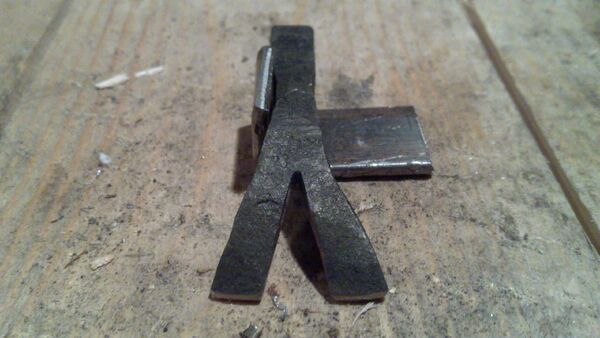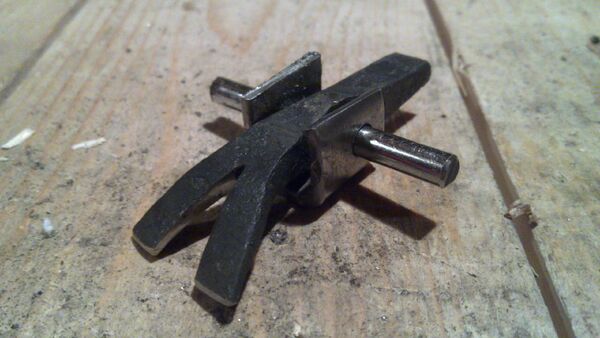Introduction[]
This article describes a method for making a fork and tenon into which the cheiroballistra claw is attached. Make sure that the fork part is high enough, or the claw will not rotate enough to release the bowstring. The fork should not be too high, either, or it could bend or break during cocking due to increased leverage. If the fork is forged then the rectangular hole can be made with a punch.
Note that the claw shown here is based on an obsolete design that has been superceded by a much better one. Also note that this particular fork was found to be too low to operate correctly.
The process step by step[]
Take a piece of fairly thick (2,5 - 3,0mm) steel and bend it to 90 degree angle at one end. Mark the location of the axle hole using the claw:

Bend the other side into 90 degree angle to form the fork. Then drill the axle holes (~6mm):
Drill a (~8mm) hole to the bottom of the fork for the tenon:
File the hole in the bottom of the fork rectangular. Take a piece of thick (~10mm), rectangular steel and file one end thinner until it fits into the rectangular bottom hole in the fork:
Next the end of the rectangular tenon is riveted into the fork.
Finally a hole parallel to the fork axle should be punched or drilled through the tenon for a retaining pin. The pin is pushed through the slider and the tenon to prevent the fork and tenon from lifting up in extended use.




